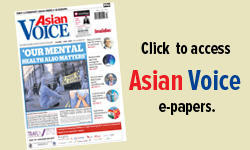Dating can be challenging for anyone, but for many second-third generation South Asian immigrants, it comes with an added layer of cultural expectations, family pressures, and societal taboos.
Striking a balance between personal choice and traditional values can make navigating relationships a complicated and, at times, stressful experience. From the stigma around dating openly to the influence of caste, religion, and parental expectations, South Asian millennials and Gen Z face unique hurdles in their search for love.
As a neuroscience-based dating coach, Manj Bahra, founder of NOVA, a modern matchmaking service for South Asian professionals shares his insight into the South Asian dating experience.
What are the key skills or mindset shifts you help your clients develop to improve their dating experiences?
The biggest mindset shift I help clients make is to stop obsessing over what they can’t control—dating apps, algorithms, the dating pool, societal expectations—and instead, focus on what’s in their hands. Most people waste energy worrying about factors they have little influence over. Instead, I guide them to shift attention to what truly moves the needle: their mindset, the stories they tell themselves about dating, whether they’re actively meeting people, and if they’re living a full life outside of dating.
A powerful tool I use is inversion theory. I tell clients, “You’re already an expert at creating your current dating results—just look at the habits, thoughts, and patterns that have led you here.” Once they map these out, the next step is simple: flip the script. Do the opposite for a while and watch what happens. This experiment often sparks a mindset shift—once you see change, you realise what’s possible.
What’s the biggest mistake high-achieving South Asians make when dating?
For many high-achieving South Asians, the fear of settling leads to an impossible search for the “perfect” partner. They treat dating like a high-stakes selection process, filtering people through rigid criteria—someone ambitious but always available, independent yet traditional, exciting yet emotionally secure. The result? No one ever feels “good enough,” and they get stuck in selection mode instead of connection mode.
For high-achieving South Asian women, this plays out in another way—they don’t settle for the wrong person, but they settle for the wrong dynamic. Raised to be fixers—balancing family expectations, excelling in high-pressure careers, and taking on emotional baggage—they carry this into dating. Instead of choosing someone emotionally available, they overcompensate in relationships, chasing men who won’t commit, trying to “earn” love through effort. But love isn’t something you work for—it’s something that happens when both people show up equally.
The key shift? Stop proving and start choosing. High standards aren’t about finding the hardest-to-get person; they’re about valuing yourself enough to walk away from those who can’t meet you where you are.
How do cultural expectations impact the dating experience for South Asians in the UK? How do you help clients balance family expectations with their personal desires in a partner?
Cultural expectations like caste and religion play a significant role in South Asian dating, primarily because of a deep desire to please elders and maintain family reputation. One of the biggest reasons parents resist inter-caste or interfaith relationships isn’t personal belief, it’s fear of reputational loss. In tightly-knit communities, marriage isn’t just about two people; it’s about family standing.
This is why I tell clients: Don’t wait for family permission to marry outside caste or religion because that permission is never coming. By asking, you signal that you need approval, which gives parents power to influence your decision. Their resistance isn’t about control, it’s about keeping you and themselves safe from social fallout. If you’re 100% sure about your choice, stand by it but be prepared to face backlash.
It’s also important to zoom out and think long-term. In 10, 20, or 30 years, will this still be an issue, or will we look back at these barriers as outdated relics? I realised that my kids wouldn’t see my interfaith marriage as a big deal. So I had a choice—be the change now, or be part of the lost generation that upheld outdated norms.
Ironically, South Asians in the UK often hold onto these traditions more rigidly than people back home. When our families moved here, they clung to culture to preserve identity—but in doing so, they froze it in time. Meanwhile, the world has moved on. The real question is: Are you willing to?
What are some of the biggest misconceptions about South Asian men and women when it comes to dating and relationships?
There are several misconceptions about South Asian men and women in dating that don’t reflect reality:
“All South Asian men are mama’s boys.” Not true. While strong family bonds are common, it’s an outdated stereotype to assume all men are overly dependent on their mothers. The real issue isn’t closeness to family, but whether they have emotional independence and can make their own decisions in relationships. Many South Asian men successfully balance family respect with personal autonomy.
“Men who live at home.” There’s an assumption that if a man still lives at home, he lacks independence or ambition. But for many South Asians, living at home is a cultural and financial norm, not a reflection of maturity. Some men live at home while actively pursuing careers, financial freedom, and personal growth. Instead of dismissing them outright, the better question to ask is: Does he have a mindset of independence? Is he making his own choices? Where someone lives matters far less than how they live.
“South Asian women’s success hasn’t really changed dating dynamics.” This isn’t so much a misconception as something that isn’t well understood. South Asian women have made huge strides in their careers—whether in corporate leadership or entrepreneurship. This shift has changed what they look for in a partner. Many now seek someone who aligns with their ambition and independence, which also reshapes expectations around marriage and parenting. Traditionally, South Asian women were expected to raise children and look after the household, but we’re now seeing a strong push towards equal partnerships. The challenge? Some men (and even older generations) haven’t fully adjusted to this shift, which can make dating more complex for high-achieving women.
How do you see the dating landscape for South Asians evolving over the next 5-10 years?
The dating landscape for South Asians is evolving, and over the next 5-10 years, we’ll see three major shifts:
More interfaith and value-based relationships
People are moving away from rigid cultural checklists and prioritizing personal happiness and compatibility over tradition. While family opinions still hold weight, individuals are taking more control over their choices, leading to a rise in interfaith and intercultural relationships. Shared values, emotional compatibility, and lifestyle alignment are becoming the key factors in partner selection, rather than just caste or religious background.
A shift in gender roles and relationship dynamics
With South Asian women making huge strides in their careers, dating expectations are changing. Many women now seek equal partnerships rather than traditional roles where they handle the majority of household and child-rearing responsibilities. This shift is reshaping marriage expectations, pushing towards a model where both partners contribute equally—financially, emotionally, and domestically. The challenge? Some men (and even older generations) are still catching up to this new reality.
A return to modern matchmaking
Ironically, as dating apps create more frustration than success, people are revisiting traditional matchmaking—but in a modernized way. That’s exactly why I launched NOVA, a matchmaking service for professionals looking for deeper, more intentional connections without the chaos of swiping culture. The future of South Asian dating isn’t about endless choice—it’s about efficient, meaningful connections that align with long-term compatibility.


